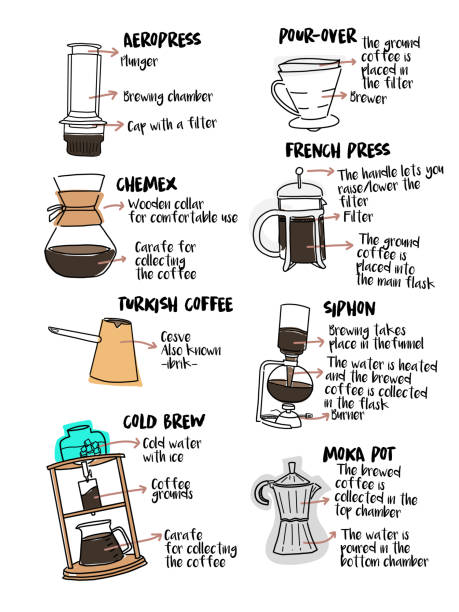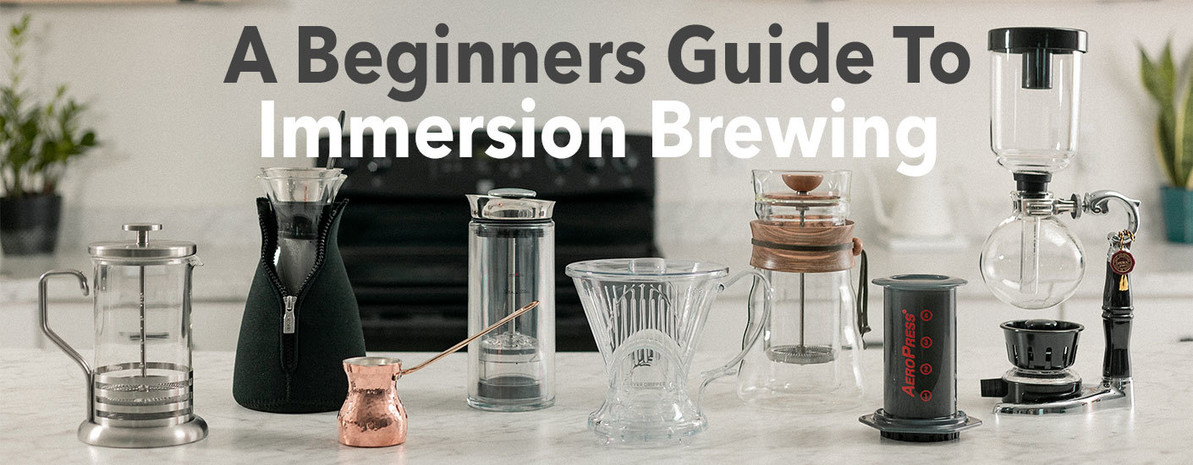A Comprehensive Guide to Different Coffee Brewing Methods You Must Attempt
A Comprehensive Guide to Different Coffee Brewing Methods You Must Attempt
Blog Article
The Scientific Research Behind Coffee Developing: How Temperature Level and Time Affect Your Drink
Recognizing the science behind coffee developing reveals that temperature level and time are not mere variables but pivotal aspects that dictate the beverage's taste account and total high quality. As we explore the nuances of these components, the question emerges: just how can one efficiently balance temperature and time to accomplish that ideal mixture?
The Chemistry of Coffee Extraction
The chemistry of coffee extraction digs into the intricate processes that change raw coffee beans into the fragrant beverage taken pleasure in worldwide. This improvement primarily involves the solubility of numerous compounds existing in the beans, which are affected by variables such as work size, water top quality, and the developing approach utilized.
Throughout the developing process, hot water functions as a solvent, removing soluble substances, consisting of caffeine, lipids, acids, and sugars, from the coffee grounds. Each compound adds to the flavor account, fragrance, and body of the last drink. As an example, acids are liable for tangy and bright notes, while oils add to a rich mouthfeel.
The extraction procedure is not uniform; various substances liquify at different prices. The first stages of brewing remove acids and sugars, leading to a pleasurable acidity, while prolonged removal can cause resentment because of over-extraction of unfavorable compounds. Comprehending these chemical communications is essential for optimizing brewing techniques, as the balance in between removal time and water temperature level can substantially affect the total high quality of the coffee. Inevitably, grasping the chemistry of coffee removal is essential to achieving a well-rounded and tasty cup.
Perfect Brewing Temperatures
Finding the right developing temperature is crucial for opening the full capacity of coffee flavors and fragrances - coffee brewing methods. Study indicates that the ideal array for developing coffee lies in between 195 ° F to 205 ° F(90 ° C to 96 ° C) Within this range, the removal process properly dissolves the preferable soluble substances in coffee beans, causing a balanced and delicious cup
Brewing at reduced temperatures, such as listed below 195 ° F(90 ° C ), may result in under-extraction, yielding an acidic and weak mixture with low-key tastes. On the other hand, developing at temperature levels surpassing 205 ° F(96 ° C) can cause over-extraction, producing a bitter and harsh preference because of the too much dissolution of unfavorable compounds, such as tannins.
In addition, the ideal developing temperature can differ depending upon the coffee bean type and roast level. Lighter roasts usually profit from slightly greater temperatures to enhance their intricate flavor profiles, while darker roasts may be much better matched to lower temperature levels to reduce resentment.
Ultimately, keeping accuracy in developing temperatures is important for accomplishing a harmonious balance of flavors, making certain that every cup of coffee delivers a rewarding sensory experience.
Effect of Developing Time
Developing time plays a critical duty in determining the flavor profile and total quality of coffee. The extraction process, which affects the preference, fragrance, and body of the drink, is largely dependent on how long the coffee grounds touch with water. Much shorter developing times can lead to under-extraction, bring about a weak or sour taste, as insufficient soluble substances are dissolved. Conversely, extended brewing can lead to over-extraction, where undesirable compounds are launched, leading to an astringent or bitter preference.
Optimal developing time differs relying on the technique utilized and the work size of the coffee. For instance, a French press usually needs about 4 minutes, while coffee extraction is typically finished within 25 to 30 secs. It is necessary to calibrate developing time in conjunction with various other variables, such as water temperature and coffee-to-water ratio, to achieve the preferred taste profile.
Understanding the effect of brewing time makes it possible for coffee enthusiasts to improve their brewing methods, ultimately boosting the sensory experience of their cup (coffee brewing methods). With mindful attention to this variable, one can open the full capacity of the coffee, disclosing its special characteristics and subtleties
Developing Methods and Their Impacts

For circumstances, approaches like French press and cold brew permit a much longer steeping time, causing a fuller body and durable taste as a result of increased extraction of oils and soluble solids. Conversely, espresso developing uses high pressure and a shorter extraction time, creating a focused shot that highlights extreme tastes and a rich crema.
Pour-over methods, such as Chemex or V60, use an even more regulated discover this info here removal procedure, permitting the maker to control circulation price and water circulation, which can improve brightness and clearness. Percolation methods cycle water through the coffee grounds numerous times, leading to a more powerful, commonly bitter flavor.
Finally, making use of paper filters versus metal filters can additionally influence the final taste; paper filters usually yield a cleaner mug by trapping oils and great particles, while metal filters allow more oils to pass through, contributing to a fuller mouthfeel - coffee brewing methods. Recognizing these nuances can raise the coffee experience significantly
Tips for Perfecting Your Mixture
A well-executed mixture can transform also the easiest coffee right into an exceptional experience. Grind the beans just before brewing to maximize quality, making sure the grind size matches your brewing technique-- coarser for French press and finer for espresso.
Water top quality plays a crucial function; usage filtered water complimentary from pollutants. The perfect brewing temperature varies check my source between 195 ° F and 205 ° F(90 ° C to 96 ° C ) Also warm can blister the coffee, while as well trendy may under-extract flavors.
Timing is just as vital. For immersion techniques, soaking for 3 to five minutes is ideal, whereas drip approaches generally take around 5 mins. Trying out brew times to discover your recommended strength.

Verdict
In summary, the elaborate relationship in between temperature and time is vital in the coffee developing procedure. Understanding these next clinical concepts empowers people to refine their brewing methods, eventually leading to a much more enjoyable and balanced coffee experience.
Recognizing the scientific research behind coffee brewing exposes that temperature and time are not simple variables however pivotal elements that determine the drink's flavor profile and general top quality. Recognizing these chemical communications is important for optimizing developing strategies, as the balance between extraction time and water temperature level can significantly influence the overall top quality of the coffee.Developing time plays an essential function in establishing the flavor account and general top quality of coffee. By concentrating on these elements-- bean high quality, grind size, water temperature, steeping time, and ratio-- you can raise your coffee brewing procedure, resulting in a consistently exceptional mug.
In summary, the elaborate partnership between temperature and time is paramount in the coffee brewing process.
Report this page